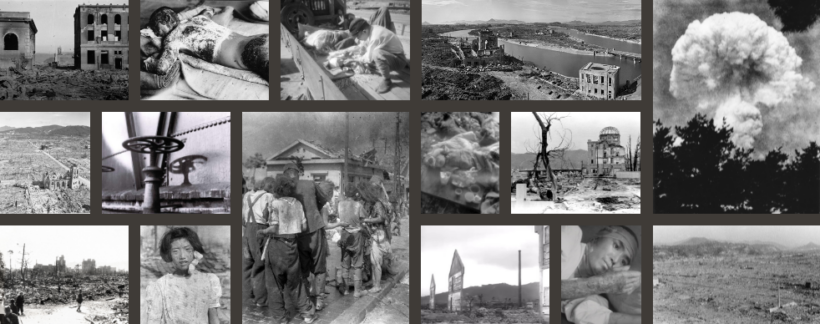The Visual archives of Hiroshima atomic bombing consists of 1,532 photographs and two films recorded in Hiroshima between August 6 and the end of December 1945 by citizens directly affected by the atomic bombing, as well as by photographers from Japanese newspapers and news agencies and those accompanying scientific research teams. The photographs document a wide range of effects from the use of nuclear weapons, including the city reduced to ruins, severely burned victims, and effects from radiation on the human body.
The photos and films represent definitive primary source material that documents the aftermath of the atomic bombing on the ground from the perspective of the victims and those around them. Considering the scarcity of cameras in Japan at the time as well as the unprecedented chaos immediately after the atomic bombing, the fact that these images exist at all is of unshakable value. The images still exist today because of the determination of the photographers who resisted pressure from both Japanese and American military authorities to destroy this visual evidence.
The photographs are divided into three periods. The first consists of photos of August 6, 1945, the day of the atomic bombing, the Mushroom cloud taken from ground level, and affected citizens. These photos represent rare images of the city in flames and wounded citizens amid unprecedented chaos, taken from the ground level by people who themselves experienced the atomic bombing and barely escaped death, as they were in or near Hiroshima when the atomic bomb detonated.
The second period consists of photos taken from the day after the atomic bombing until one month later. They depict Hiroshima immediately after its destruction and the injuries to people from burns and radiation. While there are few photos of the extreme chaos in the devastated city on August 6, the Japanese Imperial Army’s survey team and photographers and reporters for newspapers and news agencies from outside Hiroshima Prefecture began entering the city the next day, taking images of the ruined city center near the hypocenter, severely burned citizens, and rescue operations in situations where it was difficult to treat the wounded and carry out life saving operations. The photos also showed victims suffering from acute symptoms of radiation exposure immediately after the bombing. The images, of high documentary quality, were taken before the United States Strategic Bombing Survey Team and other groups arrived in Hiroshima and took their many photos.
The third period consists of photos taken from one month after the atomic bombing until the end of 1945 and provides an overview of the destruction and effects from radiation. Survivors were suffering early symptoms of A-bomb radiation.
The number of victims of the Hiroshima atomic bombing is estimated to have been 140,000 people (with a margin of error of ± 10,000) by the end of December 1945. This collection of materials documents a wide range of effects from the use of nuclear weapons, including the city reduced to ruins, severely burned victims, and effects from radiation on the human body.
More than 2,000 nuclear tests have been conducted since the end of World War II. Nine countries still possess more than 12,000 nuclear weapons. What the photos and films of this visual archive remind us of is that this reality of the atom bomb does not remain in the past. These images are a heritage that must never be lost to the world so they can be used to help us understand the horrors of the atomic bombing and to address humanity’s shared determination to ensure the experience is never repeated.
Chugoku Shimbun is a major Hiroshima-based Japanese newspaper. Visual archives of Hiroshima atomic bombing—Photographs and films has been nominated for UNESCO’s “Memory of the World.“










